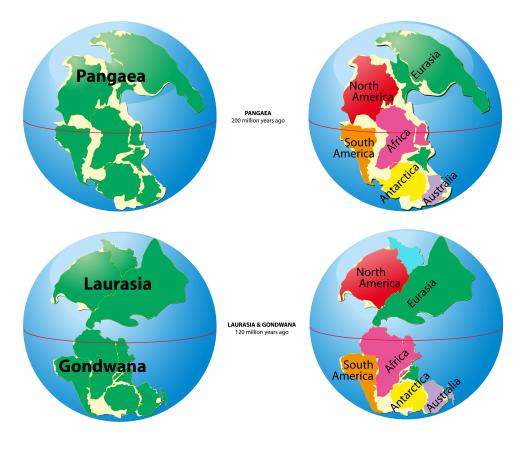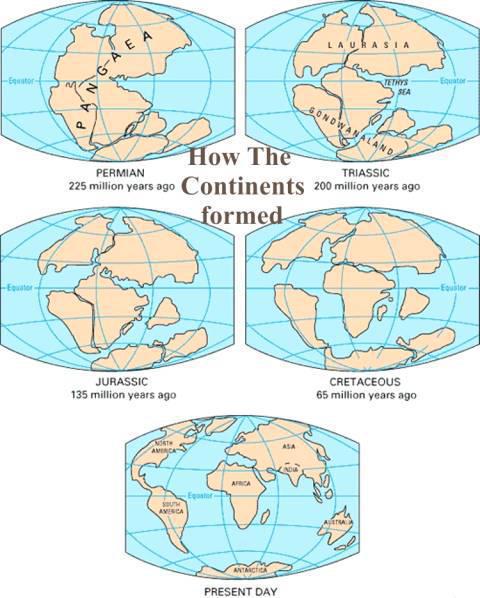What is a Supercontinent?
 Michael Anissimov
Michael Anissimov
A supercontinent is a continent that includes more than one craton (continental core). A modern day example is Eurasia. This example may be misleading, however, because practically every modern-day continent has numerous minor cratons. Here, the word "craton" generally refers to historical continents, like Baltica, the craton under Europe, which has been an independent continent in the geologic past.
Another definition sometimes used for supercontinent is more narrow: a continent that makes up the majority of land on Earth. The prototypical example would be Pangaea, a C-shaped land mass that existed 250 million years ago, encompassing almost all the land on Earth, except for North China and a few minor islands. Pangaea straddled the equator, reaching almost from Pole to the Pole. Pangaea was centered around the modern day Atlantic Ocean. In fact, the Mid-Atlantic Ridge in the Atlantic Ocean is the original rift that caused Pangaea to split apart.

Supercontinents are the culmination of an effect called seafloor spreading, where rifts in the center of sea floors worldwide keep generating new crust, pushing the continents along with them. This seafloor spreading eventually pushes all the worlds continents together (because some rift systems will always overpower others), forming a supercontinent. Within 20--100 million years, the supercontinent splits apart again. This process is called the supercontinent cycle, and it is thought to repeat every 250--500 million years. A possible future supercontinent has been tentatively named Pangaea Ultima.

A supercontinent is relatively hostile to life. Its interiors are vast deserts with temperature extremes. This is due to the absence of the thermal modulation effects of water as well as the continent being so large that it is difficult for clouds to float all the way into the center and drop their payloads. Imagining a continent three times the size of Eurasia gives new meaning to the term "landlocked country."
AS FEATURED ON:
AS FEATURED ON:














Discuss this Article
Post your comments